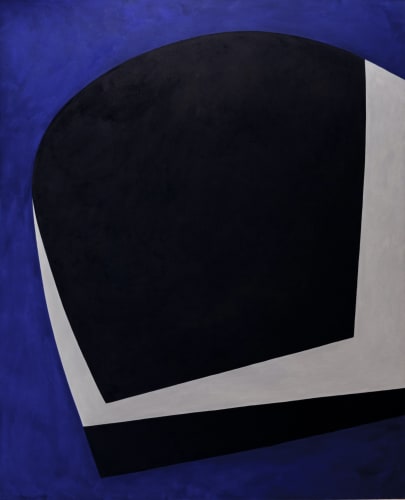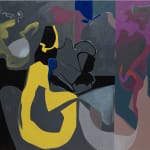The Motion of the Imagination: Leopold Plotek at the Corkin Gallery
Because a painting is not an image, it asks things of us that Instagram does not. A painting is a physical object which you must face as if you were facing a human being, an embodied Other looked at with something like the vulnerable core of your being. And yet when you truly look at a painting, you are also alone with yourself. This double condition is one of the urgencies that painting offers our moment of the fragmented attention span. Leopold Plotek’s Throw Away the Lights, the Definitions, at Corkin Gallery, gives a beautiful account of the potency of experience that contemporary painting can invoke.
Of the fourteen paintings in the exhibition, most are of recent production but a few belong to earlier stages of the career of this Montreal éminence grise. Plotek has never worked in series; he strives to make each of his works unique, and this raises a rich challenge for curators mixing early and later work. Formal aspects and deeply assimilated narrative and existential content must resonate among works that are sharing the same space if the exhibition as a whole is to cohere. It must be said that, surprisingly, the second long-running exhibition of Plotek’s work in two years is occurring in Toronto, whereas the major Montreal institutions, the MACM and MMFA, usually so admirable in organizing surveys of their best artists, have not yet taken up the responsibility of presenting anew the oeuvre of one of the city’s great painters.
Paintings after Poems
The juxtaposition of Sunday Morning (2017) and The City’s Fiery Parcels All Undone (1987) brings a new understanding of Plotek’s production. The sources of these paintings are major modernist poems, profoundly visual in effect: Wallace Stevens’s Sunday Morning (1923) and Hart Crane’s The Bridge (1930). Unlike Plotek’s History Paintings, in which he adapted conventions of eighteenth- and nineteenth-century representation, these works belong to a different register of illustration. Instead of taking up a moment in the life of a historical figure (Crane’s suicide leap into the Gulf of Mexico provided the subject of one of the History Paintings), Plotek inhabits the life of a poem.
The “fiery parcels” of Crane’s poem, the lights of Manhattan’s skyscrapers, appear as a bright rectangle in the upper left of The City’s Fiery Parcels All Undone. We are placed in the shadows of the piers beneath Brooklyn Bridge, which is also the position of the narrator at the end of the opening section of The Bridge. In Stevens’s poem, a woman sits with “late / Coffee and oranges in a sunny chair” and feels that instead she should be in church, that she should still believe. “She dreams a little, and she feels the dark / Encroachment of that old catastrophe,” the sacrifice of Christ. “The day is like wide water, without sound, / Stilled for the passing of her dreaming feet / Over the seas, to silent Palestine.” Plotek freely adapts the visual elements of the poem, setting them into an imaginative movement of scale, form, and colour. His woman is inseparable from her modernist armchair of sky and dark-grey blues, above a horizontal section that seems to evoke the “wide water” of the poem and through which the legs of her chair penetrate as if they formed a strange, hovering pedestal. There is a coffee urn on a table nearest us in the composition, its handle presenting itself as if to be grasped. Toward the upper middle of the canvas is Christ in his tomb, a soft, grey body folded in the fetal position like an Etruscan burial figure. The elements here, no matter what time they belong to—that of the sacrificial “old catastrophe” or that of light through a window on a Sunday morning in 1923, the back-and-forth time of the poem or of the painting—also belong to the motion of the imagination. Plotek’s sympathies lie with Proust’s observation that “perhaps the immobility of the things that surround us is forced upon them by our conviction that they are themselves and not anything else, by the immobility of our conception of them.”


